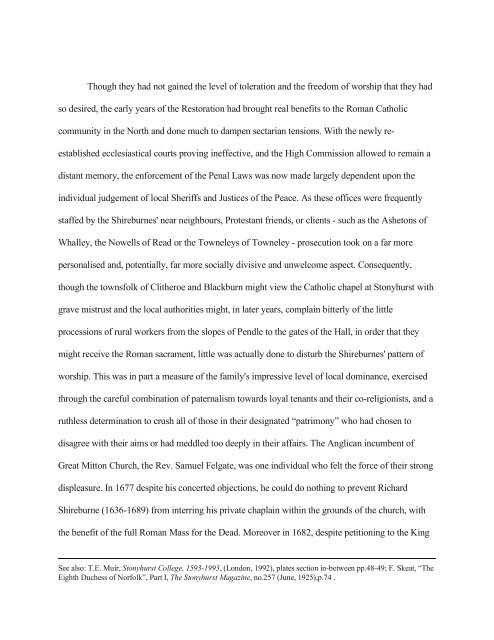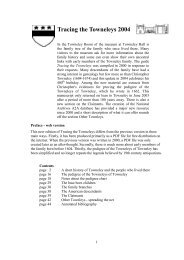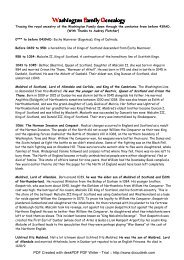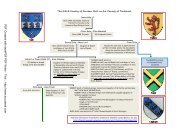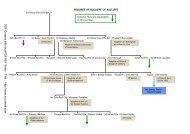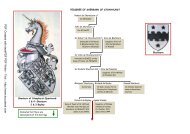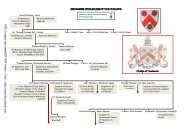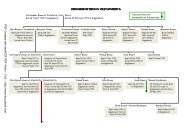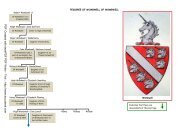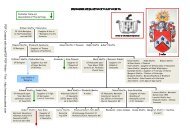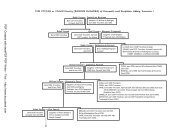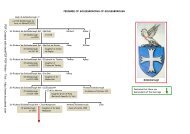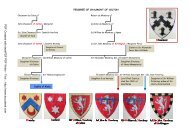SHIRBURNS of Stoneyhurst.pdf - Ingilby History
SHIRBURNS of Stoneyhurst.pdf - Ingilby History
SHIRBURNS of Stoneyhurst.pdf - Ingilby History
You also want an ePaper? Increase the reach of your titles
YUMPU automatically turns print PDFs into web optimized ePapers that Google loves.
Though they had not gained the level <strong>of</strong> toleration and the freedom <strong>of</strong> worship that they had<br />
so desired, the early years <strong>of</strong> the Restoration had brought real benefits to the Roman Catholic<br />
community in the North and done much to dampen sectarian tensions. With the newly re-<br />
established ecclesiastical courts proving ineffective, and the High Commission allowed to remain a<br />
distant memory, the enforcement <strong>of</strong> the Penal Laws was now made largely dependent upon the<br />
individual judgement <strong>of</strong> local Sheriffs and Justices <strong>of</strong> the Peace. As these <strong>of</strong>fices were frequently<br />
staffed by the Shireburnes' near neighbours, Protestant friends, or clients - such as the Ashetons <strong>of</strong><br />
Whalley, the Nowells <strong>of</strong> Read or the Towneleys <strong>of</strong> Towneley - prosecution took on a far more<br />
personalised and, potentially, far more socially divisive and unwelcome aspect. Consequently,<br />
though the townsfolk <strong>of</strong> Clitheroe and Blackburn might view the Catholic chapel at Stonyhurst with<br />
grave mistrust and the local authorities might, in later years, complain bitterly <strong>of</strong> the little<br />
processions <strong>of</strong> rural workers from the slopes <strong>of</strong> Pendle to the gates <strong>of</strong> the Hall, in order that they<br />
might receive the Roman sacrament, little was actually done to disturb the Shireburnes' pattern <strong>of</strong><br />
worship. This was in part a measure <strong>of</strong> the family's impressive level <strong>of</strong> local dominance, exercised<br />
through the careful combination <strong>of</strong> paternalism towards loyal tenants and their co-religionists, and a<br />
ruthless determination to crush all <strong>of</strong> those in their designated “patrimony” who had chosen to<br />
disagree with their aims or had meddled too deeply in their affairs. The Anglican incumbent <strong>of</strong><br />
Great Mitton Church, the Rev. Samuel Felgate, was one individual who felt the force <strong>of</strong> their strong<br />
displeasure. In 1677 despite his concerted objections, he could do nothing to prevent Richard<br />
Shireburne (1636-1689) from interring his private chaplain within the grounds <strong>of</strong> the church, with<br />
the benefit <strong>of</strong> the full Roman Mass for the Dead. Moreover in 1682, despite petitioning to the King<br />
See also: T.E. Muir, Stonyhurst College, 1593-1993, (London, 1992), plates section in-between pp.48-49; F. Skeat, “The<br />
Eighth Duchess <strong>of</strong> Norfolk”, Part I, The Stonyhurst Magazine, no.257 (June, 1925),p.74 .


